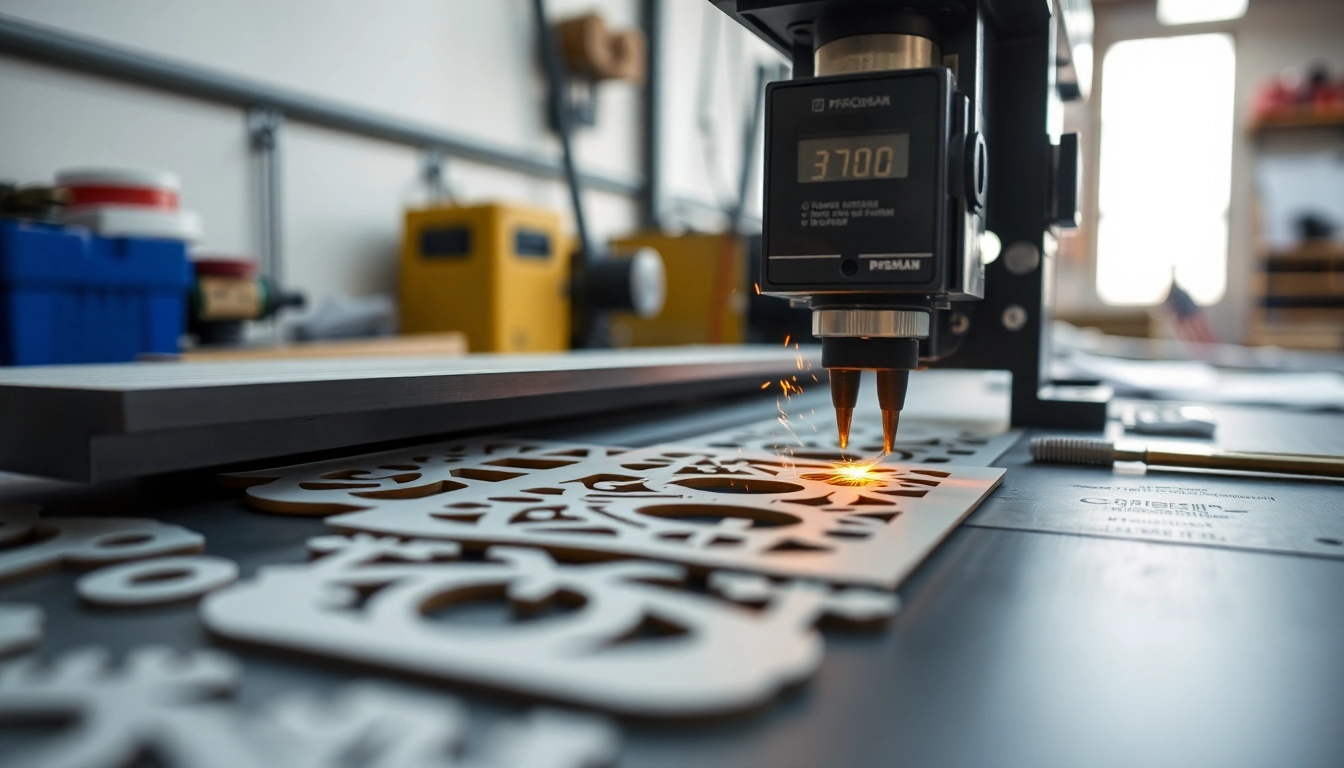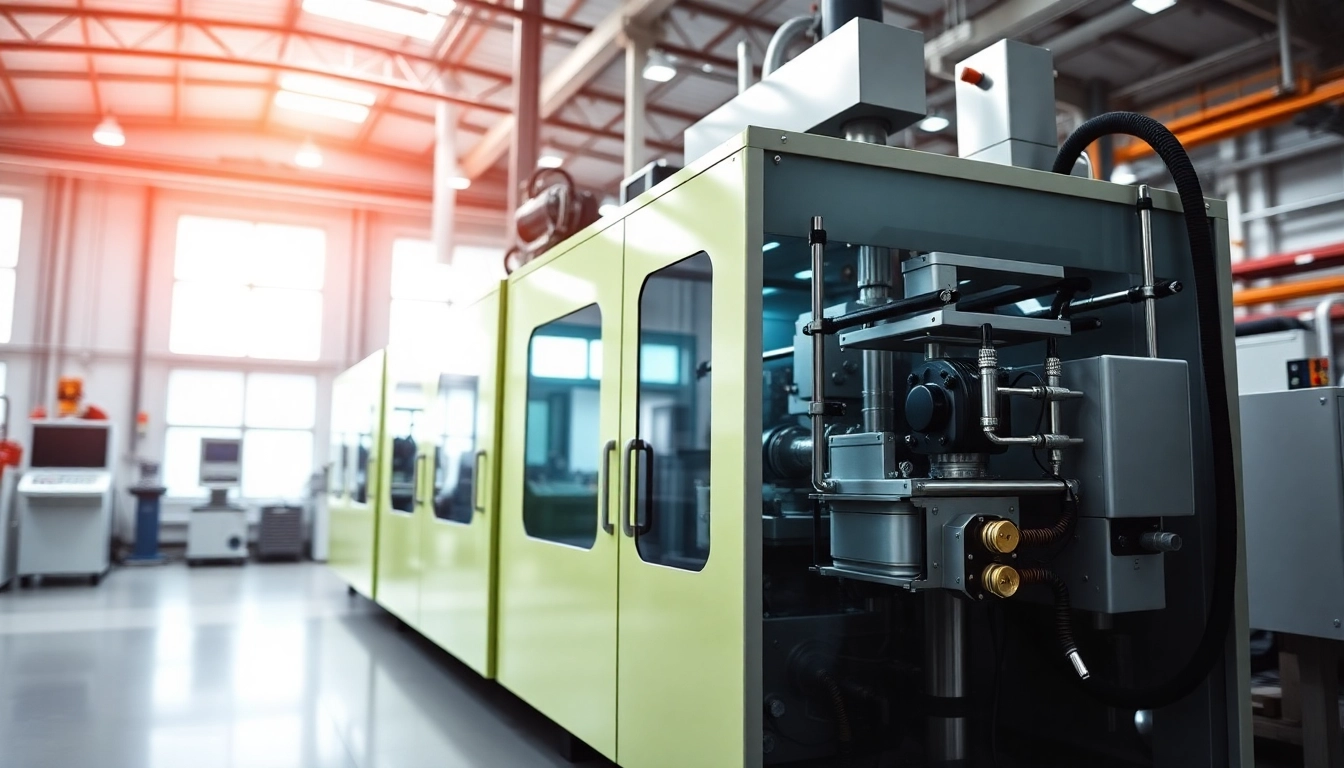Understanding Precision Die Cutting
What is Precision Die Cutting?
Precision die cutting is a manufacturing process that involves cutting materials into specific shapes and sizes using a die. This technique utilizes a custom, sharp-edged template made from metal or hard materials to produce intricate forms with unmatched accuracy. It is widely employed in various industries for producing parts from sheets or rolls of materials, making it essential for manufacturing components that require high repeatability and exact specifications.
The precision die-cutting process can be accomplished using various methods, including rotary and flatbed die cutting, each offering unique advantages for different applications. This method is advantageous when producing large quantities of a specific item, as it ensures uniformity and consistency across all products.
Benefits of Precision Die Cutting
Precision die cutting comes with a host of benefits that make it a favored choice in manufacturing. Here are some key advantages:
- High Accuracy: The use of specialized dies enables manufacturers to achieve tight tolerances, ensuring parts fit perfectly when assembled.
- Efficiency: Once a die is created, cuts can be made quickly and in large volumes, significantly speeding up production processes.
- Cost-Effectiveness: For large production runs, die cutting reduces material wastage and labor costs per unit, ultimately saving money.
- Diverse Material Capability: The process can be applied to a wide range of materials including paper, plastic, foam, rubber, and even metals, offering flexibility for various projects.
- Complex Shapes: The ability to cut intricate designs and complex shapes makes precision die cutting invaluable for specialized applications.
Applications Across Industries
The versatility of precision die cutting allows it to be used across various sectors, including:
- Automotive Industry: It’s used to create components such as rubber seals and gaskets that require high durability and precision.
- Medical Sector: Medical device manufacturing often utilizes die cutting for producing surgical instruments and disposable products like bandages and adhesive patches.
- Packaging: Custom packaging solutions leverage die cutting to create unique box shapes and design features.
- Electronics: The electronics industry uses die-cut materials for insulation and protective covers, ensuring safety and functionality.
- Signage and Displays: Precision die cutting helps create signs, displays, and promotional materials that catch customers’ eyes and convey brand messages effectively.
Key Technologies in Precision Die Cutting
Rotary vs. Flatbed Die Cutting
Understanding the difference between rotary and flatbed die cutting is crucial for selecting the appropriate method for your project.
Rotary die cutting utilizes a cylindrical die that rotates, cutting materials as they are fed through. This method is particularly suited for high-speed production runs, offering the advantages of rapid output and the ability to handle large roll materials. It’s ideal for creating labels, stickers, and other continuous forms that need precise dimensions.
In contrast, flatbed die cutting relies on a flat surface where the material is placed, and the die presses down to cut it. While it may be slower than rotary die cutting, it offers superior precision for intricate designs and is better suited for producing smaller quantities of more complex shapes. Flatbed die cutting can handle thicker materials and is often used for packaging and custom shapes.
Advancements in Die Cutting Machinery
The die cutting industry is experiencing significant technological advancements that enhance both the efficiency and precision of the process. Modern machines are now equipped with features that allow for:
- Automated Setup: New technologies reduce setup times by automating the calibration and alignment processes, thereby increasing throughput.
- Smart Software Integration: Advanced software allows manufacturers to design and modify die cut patterns seamlessly, helping to adjust for discrepancies in material thickness or variations in production runs.
- Sustainability Features: Advanced machines offer capabilities to minimize waste, recycle material scraps, and utilize eco-friendly processes, reflecting an industry shift towards sustainability.
Material Compatibility in Die Cutting
One of the strengths of precision die cutting is its compatibility with a variety of materials. Some of the commonly used materials include:
- Paper and Cardboard: Often used for packaging and promotional materials, offering ease of cutting and design versatility.
- Plastics: Used in many industries, plastic die cutting may include acrylic, PET, and PVC for items ranging from packaging to automotive parts.
- Foams: Ideal for insulation or cushioning applications, foams can be die-cut into precise shapes to improve protective packaging.
- Metals: Thin metals can also be processed using die cutting for components in electronics or automotive applications.
Best Practices for Precision Die Cutting
Design Considerations
Proper design is vital for effective die cutting. Here are key factors to consider:
- Die Design: Ensure that the die is well-designed, accounting for factors such as material thickness, cutting pressure, and sharpness of the edges.
- Tolerance Levels: Define the acceptable tolerances early in the design stage to avoid production discrepancies that could lead to increased costs or wasted materials.
- Material Selection: Choose materials that align with the intended use of the parts to maintain durability and functionality.
- Prototype Testing: Develop prototypes to test the effectiveness of designs and cutting methods before mass production.
Choosing the Right Vendor
Selecting a reliable vendor is crucial for successful precision die cutting. Consider the following when choosing a partner:
- Experience: Look for vendors with significant industry experience and positive customer reviews, indicating a track record of quality and reliability.
- Technical Capabilities: Ensure the vendor has the technological capacity and machinery suitable for your specific requirements.
- Quality Control Measures: Inquire about their quality control processes to guarantee production standards are met consistently.
- Customer Support: Choose vendors who offer solid communication and support to address challenges that may arise during production.
Quality Control Measures
Maintaining quality is critical in precision die cutting. Effective quality control measures include:
- Regular Inspections: Conduct frequent inspections during and after production phases to catch quality issues early.
- Testing Tolerances: Use measuring tools to ensure that cut parts meet the defined tolerances, especially in industries where precision is paramount.
- Feedback Loop: Implement a process for collecting feedback from clients regarding product quality to inform and improve future production practices.
Cost Factors in Precision Die Cutting
Understanding Cost Structures
The cost of precision die cutting is influenced by multiple factors:
- Material Costs: The type and quantity of material required will significantly impact overall expenses.
- Die Creation: Custom dies can be expensive to produce, especially for intricate designs, but they are amortized over high-volume runs.
- Production Volume: Higher production runs generally lead to lower costs per unit, making the process more economically viable.
Estimating Job Costs
Estimating costs accurately is vital for budgeting purposes. To do this successfully:
- Obtain Quotes: Request detailed quotes from multiple vendors and include all potential additional costs—such as setup fees, material expenses, and shipping charges.
- Calculate Break-Even Points: Determine how many units you need to produce to break even on the job without incurring losses.
- Consider Long-Term Needs: Factor in future production needs when negotiating pricing to secure better long-term agreements.
Value for Money in Die Cutting Services
Value in die cutting services stems from balancing quality, efficiency, and cost. To ensure you are getting your money’s worth, look for vendors who:
- Provide Detailed Reports: Transparency in processes and outcomes can help justify costs associated with the service.
- Offer Guarantees: Vendors who stand by their products with quality guarantees often deliver higher value.
- Support Sustainability: Providers that prioritize eco-friendly practices may also help reduce your overall costs through waste reduction.
Future Trends in Precision Die Cutting
Innovations to Watch
The landscape of precision die cutting is evolving rapidly. Future innovations include:
- Automation: Increased use of automation in die cutting machinery will enhance efficiency and reduce production costs.
- 3D Die Cutting: Expanding into 3D die cutting allows manufacturers to create complex shapes that were previously impossible to achieve.
- Integration with CAD Software: Advanced design tools will allow for quicker iterations and more complex designs, streamlining the design-to-production process.
Environmental Considerations
As sustainability becomes paramount, the die cutting industry is increasingly focused on minimizing environmental impacts. Manufacturers are looking at:
- Waste Reduction Techniques: Optimal layouts and cutting techniques that reduce material wastage are a priority.
- Recyclable Materials: Encouraging the use of recyclable materials can align production goals with environmental sustainability.
- Energy Efficiency: Investing in energy-efficient machinery contributes to reduced carbon footprints and overall costs.
Expanding Applications in New Markets
As technology advances, precision die cutting is finding new applications in emerging markets. Some notable expansions include:
- Smart Packaging: The integration of smart tech into packaging solutions is driving the need for innovative die-cut designs.
- Medical Technologies: With the growth of telehealth and portable devices, precision die cutting is crucial for crafting intricate components for new medical devices.
- Renewable Energy: Components for solar panels and wind turbines are increasingly made using die cutting, reflecting a shift toward sustainable energy solutions.


